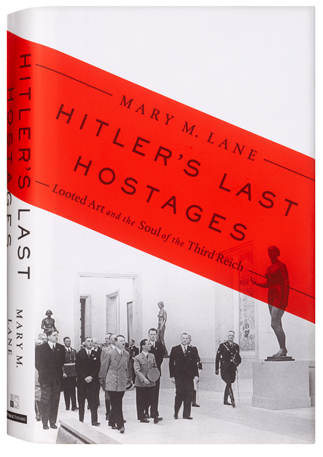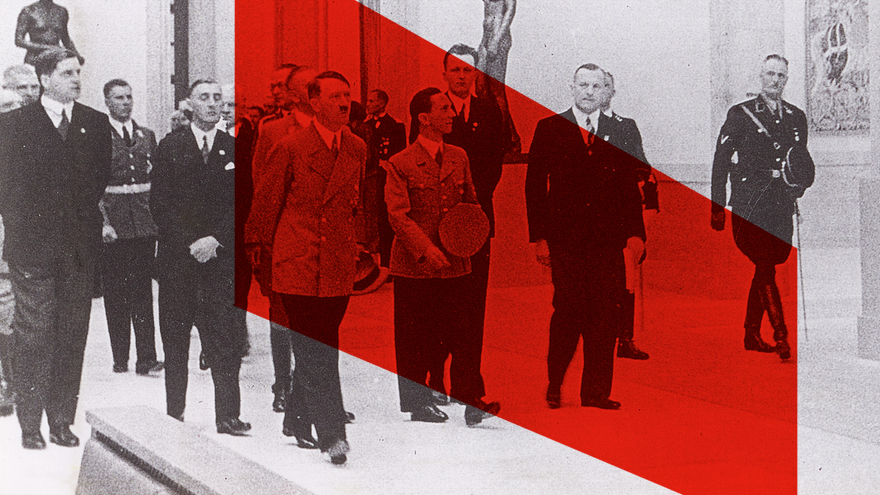
In November 2013, Mary Lane ’10 was awakened in her New York City hotel room by a phone call from a Europe-based editor for the Wall Street Journal. As the chief European art reporter for the Journal, Lane was based in Berlin but was in New York to cover the annual Impressionist and Modern Art Auction at Christie’s. The editor on the phone told her to return to Berlin immediately. What had just been reported there was big news, and the Journal wanted her to investigate it and write a Page One article within 72 hours.
What had been revealed by German magazine Focus was that an octogenarian recluse named Cornelius Gurlitt had for years been hiding approximately 1,200 works of art in his small apartment in Munich, pieces by masters such as Renoir, Picasso, and Matisse, and countless other notable artists. Focus reported that Cornelius had inherited the works from his father, Hildebrand, an art dealer who had collected artworks for Adolf Hitler in the 1930s and 1940s. Moreover, German officials had discovered and confiscated the collection from Cornelius in early 2012 as part of a tax-evasion investigation—and had kept the existence of the artworks secret for almost two years before Focus broke the story.
Lane wrote her Page One article, but what she found out during her research into the Gurlitts and the unearthing of the art trove, and how the German government handled the situation, was mind-boggling and disturbing and made her realize she needed to dig deeper. The result of her investigative work over the next five years was Hitler’s Last Hostages: Looted Art and the Soul of the Third Reich, a highly researched, comprehensive look at Hitler’s obsession with art and the irrevocable impact he had on the Western art world—an impact that still resonates today.
As has been well documented, Hitler’s tyrannical rise to power was predicated on producing a purified German state, devoid of “degenerate” components. One of the elements he sought to control was artistic expression and, indeed, Lane argues that his fixation on art was a core part of his fascist ideology. He claimed there was true “Aryan art” and then what he designated “degenerate art,” and it was his role to elevate the first and denigrate the second. He implemented his agenda as soon as he obtained his chancellorship in 1933, and Lane writes, “Hitler saw the promotion of ‘Great German Art’ as a top priority.” Ably assisted by his propaganda minister, Joseph Goebbels, Hitler set out to replace the cultural influences of individual artists with government-controlled authority.
To document the effects of this devastating shift, Lane delves deep into the lives of the popular and talented German artists of the day, such as Max Beckmann, Käthe Kollwitz, Max Liebermann, Emil Nolde, and particularly George Grosz, whose work and life she chronicles in great depth. Through their histories, she illustrates the evolution of the art movements of the first decades of the 20th century and how they were affected by the politics of the era. Artists enjoyed the freedom to express themselves as they wanted, but Grosz, who watched Hitler’s ascendancy with horror, realized all that was threatened and became a strident and prescient political commentator through his art. His dismay was well justified—by the time Hitler espoused that, as Lane says, “a nation’s art reflected the genetic purity of its citizens,” the works of these famous artists had been relegated to the status of degenerate art, and their careers were in ruins.
In an ironic twist, the works of these artists and other well-known masters formed the bulk of the artworks Hildebrand Gurlitt collected over the years and left to his son. Ostensibly, Hildebrand was acquiring art to support Hitler’s pet project, a Führermuseum, which Hitler was determined to build in his hometown of Linz, Austria, and fill with great Aryan art. As Hildebrand traveled around Europe, taking advantage of the persecution of owners of art forced to sell their treasures or simply confiscating art from various collections, he not only gathered works for the museum but accumulated over 1,000 artifacts, paintings, sculptures, and sketches for his own cache. How those works ended up in a small apartment in Munich involved Hildebrand hiding boxes of them away, escaping to a country manor with other art pieces as the Allies approached in 1945, and managing to worm his way out of any incriminations by investigative bodies who were looking into looted art after the war. When Hildebrand died, Cornelius took over his father’s estate, intent on preserving the family’s reputation while also selling artworks discreetly on the grey market. He was able to make these sales successfully until he caught the eye of German tax officials, who eventually discovered the large collection of art in his apartment.
If there is a lesson to be learned in Lane’s narrative, it becomes evident as she recounts the Germans’ handling of the Gurlitt affair and its implications for Germany coming to terms with the vast amount of art looted during World War II. The tax officials didn’t disclose their discovery of the Gurlitt trove because they said it was a tax issue, even though it would not have been hard for them to figure out the artworks had been obtained through amoral methods during Hitler’s reign. To Lane, their response seemed indicative of, as she says, “the general German mentality that the letter of the law and the spirit of ethical behavior—even in cases where the Holocaust is concerned—are unrelated.” In addition, she found that German officials were disinclined to make an effort to return looted art to the rightful owners or their descendants. German laws for restitution were flimsy, and in fact laws were in place to allow private citizens to keep Nazi-acquired art. And even if survivors could produce documentation of ownership—unlikely, since most of it had been destroyed by the Nazis—the statute of limitations for recouping stolen art had expired in 1970.
To illustrate the intricacies and difficulties of the fight for restitution, Lane tells the stories of two Jewish families who did indeed have the documentation of ownership for two paintings found in Munich. What they endure to finally get their artwork back blatantly reveals the inadequacies of the German push to rightfully restore art to its proper owners. Lane’s hope is that circumstances will improve because, as she writes at the end of the book, “until that occurs—until Hitler’s Last Hostages are acknowledged, freed, and returned—the moral stain of the 1930s and 1940s remains in Germany.”

Leave a Reply